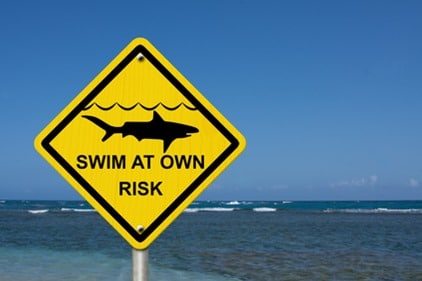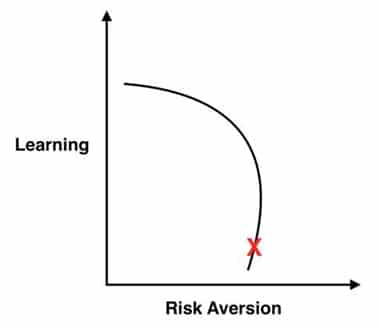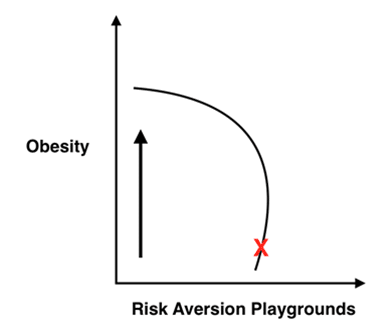Acceptable Risk as a Decision Making Process
By Dr Rob Long
 We should all know that the assessment of risk is a subjective process, determined by hundreds of social and psychological factors. The idea that risk assessment is a rational process via assessment of frequency, consequence and severity is contradicted by the evidence (Kahneman, Weick, Slovic etc). Most decision making is not a slow rational process but rather a quick aRational (non-rational) process. This is why the handbook to the Risk Management Standard (ISO AS/NZS 31000: 2009) HB327:2010 Communicating and Consulting About Risk takes such a strong focus on heuristics and other social psychological influences of judgment.
We should all know that the assessment of risk is a subjective process, determined by hundreds of social and psychological factors. The idea that risk assessment is a rational process via assessment of frequency, consequence and severity is contradicted by the evidence (Kahneman, Weick, Slovic etc). Most decision making is not a slow rational process but rather a quick aRational (non-rational) process. This is why the handbook to the Risk Management Standard (ISO AS/NZS 31000: 2009) HB327:2010 Communicating and Consulting About Risk takes such a strong focus on heuristics and other social psychological influences of judgment.
The WHS Act and Regulation is full of language that substantiates the subjectivity of risk assessment. For example, As Low as Reasonably Practicable (ALARP) and Due Diligence. Words such as ‘adequate’, ‘relevant’, ‘reasonable’ and ‘appropriate’ thread through the legislation and regulation providing a field day for lawyers and the courts to deliberate on definition as indicators of culture. Interestingly, there is nothing in the act that suggests that injury data should be kept as a cultural measure. Even when people seek definition of terminology in the Act this too varies according to context.
There is nothing wrong with the assessment of risk being subjective, so lets not deceive ourselves and suggest risk assessment is an objective, scientific or mechanistically determined activity. The beauty of the subjectivity of risk is that it allows humans to make flexible and fluid judgments according to context, variation and situation. On most occasions heuristics work well as a decision making factor, it seems when things doesn’t work people dream up systemic causes in hindsight, that failure is associated with some rational process. Then, the regulator or systems people develop new and more complex systems to compensate for a wrong judgment when in fact, that is not how judgments are made.
The question behind the notion of ALARP is: How safe is safe enough? The moment we come to this question we must engage in a choice of options, trade offs and an understanding of by-products of choice. The idea that all risk should be eliminated is nonsensical, anti-human and anti-learning. One fundamental of learning is developing the capability to discern between alternatives and understand trajectory. Making humans over dependent on rational-only modes of thinking deprives humans of ability required when slow processing of data is problematic. Most workers don’t return back to the site shed to read the SWMS when they encounter a new problem in risk to solve. The evolution of hazards on site is not served well by inflexible models of risk assessment. The blanket position of risk aversion, driven by the absolute of zero, continues to drive a fixation on injury data, minimalism and dependence on systems. Nothing about zero thinking provides the skills required in a crisis when rapid decision making or ‘gut’ thinking is required.
So let’s have a quick look at what a trade off in risk may look like:
 The first graph shows that risk sits in tension with the objective of learning, the greater to move towards risk aversion, the more we diminish opportunities for learning. Somewhere along the way (promoted by the absolutism of zero) the safety industry has made a trade off with learning, language of imagination and creativity.
The first graph shows that risk sits in tension with the objective of learning, the greater to move towards risk aversion, the more we diminish opportunities for learning. Somewhere along the way (promoted by the absolutism of zero) the safety industry has made a trade off with learning, language of imagination and creativity.
 An example of a by-product (trade off) of a risk aversion decision can be observed with playgrounds. As society has attempted to make playgrounds less risky, the trade off has been a risk in more longitudinal risk, obesity. Now that people have realized the nature of the trade off (due to a lack of discerning of trajectory) the pendulum is swinging back with many people calling for less wrapping up of kids in cotton wool. The best known proponent is Tim Gill http://rethinkingchildhood.com/no-fear/
An example of a by-product (trade off) of a risk aversion decision can be observed with playgrounds. As society has attempted to make playgrounds less risky, the trade off has been a risk in more longitudinal risk, obesity. Now that people have realized the nature of the trade off (due to a lack of discerning of trajectory) the pendulum is swinging back with many people calling for less wrapping up of kids in cotton wool. The best known proponent is Tim Gill http://rethinkingchildhood.com/no-fear/



Do you have any thoughts? Please share them below